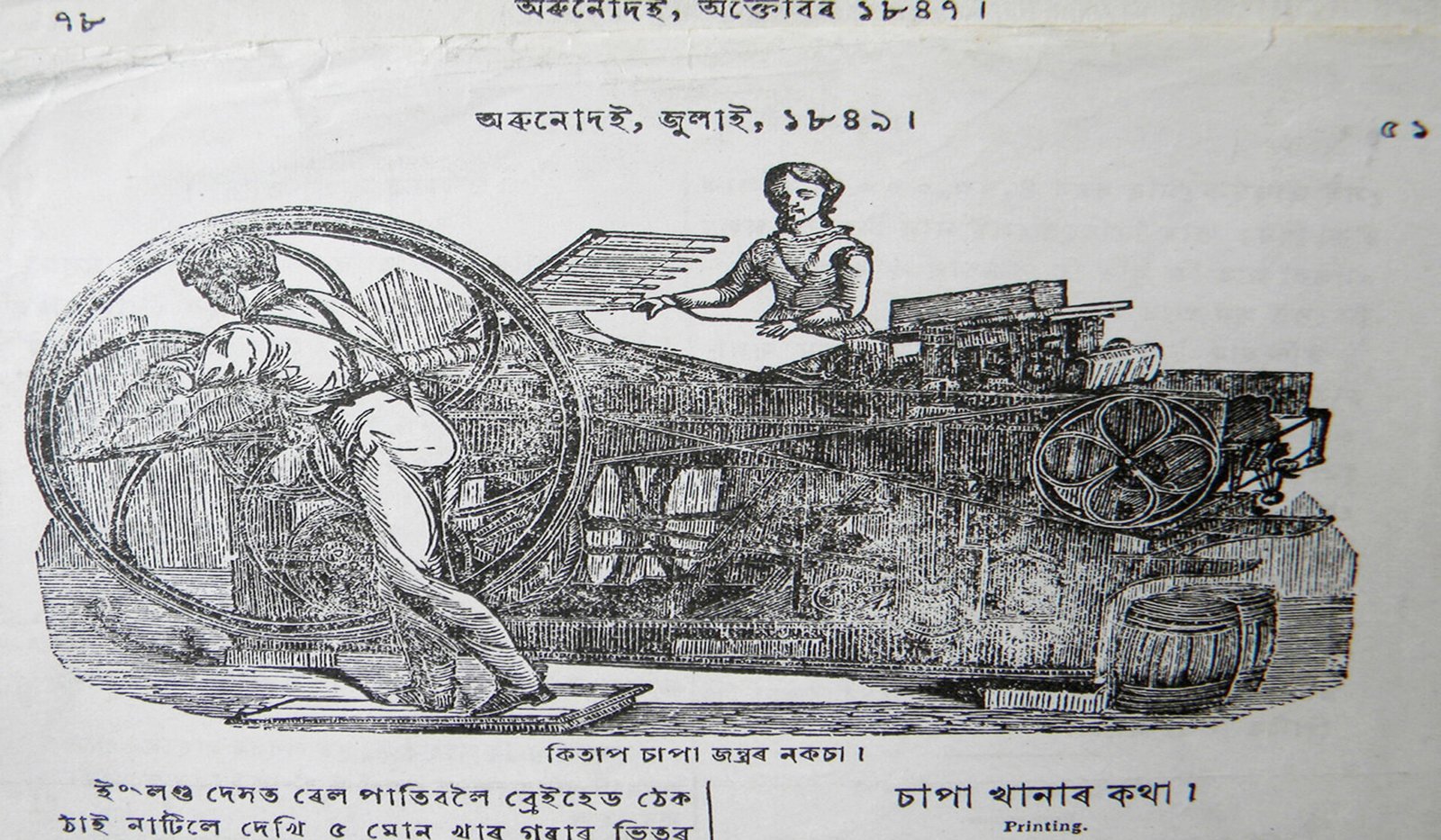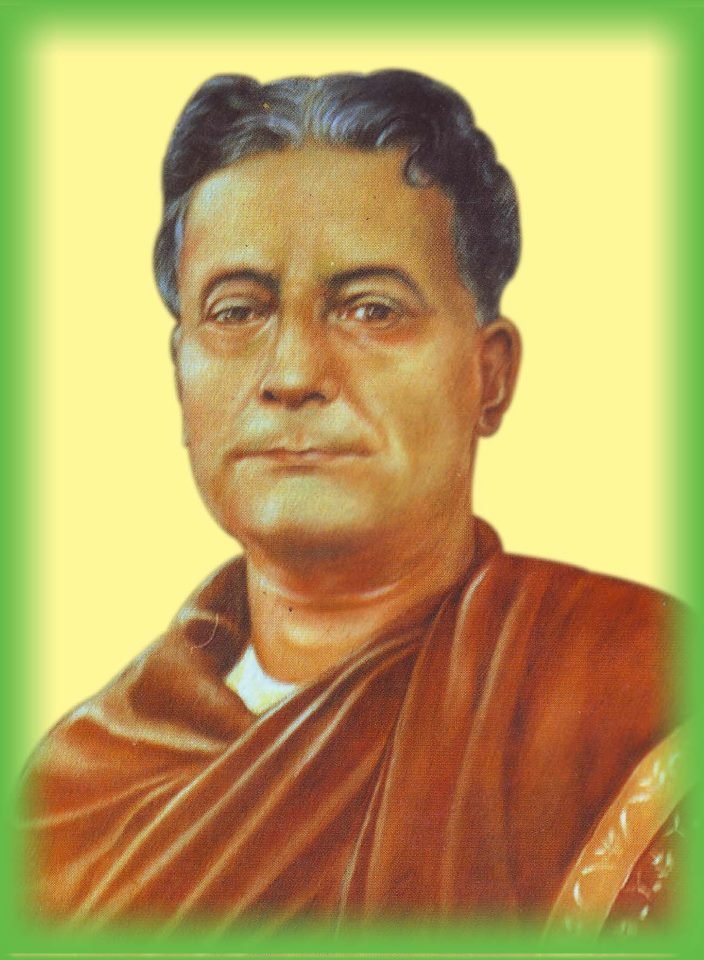By: Dipak Kurmi
HomenBorgohain, a versatile literary figure, excels as an essayist, modernist poet, proficient short story writer, and significant Assamese novelist.Additionally, he has made notable contributions as a minor literary critic and journalist. Borgohain’s editorial roles in various newspapers have left an indelible mark on Assamese journalism. During the 1950s, he played a pivotal role in shaping Assamese literature, aspiring to integrate the best global literary influences. Engaged with the literary journal Ramdhenu under the editorship of Birendra Kumar Bhattacharyya, Borgohain endeavored to introduce the finest ideas and knowledge from around the world to Assamese literature. In his early literary pursuits, Borgohain was captivated by French symbolists and English modernist poets. Noteworthy is his translation of a Baudelaire poem into Assamese for Ramdhenu, highlighting his enduring fondness for symbolists, which permeates his creative works in a latent form.
The post-independence Assamese novel stands out for its stark portrayal of political decadence, escalating poverty, and widespread illiteracy among the masses. It captures the rapid erosion of age-old values and institutions, painting a vast panorama of societal upheaval. The dream of freedom, initially uplifting the hopes of the masses to unprecedented heights, was shattered by the prevalent corruption, tyranny, and leadership crises following the transition to independence. HomenBorgohain’s novels align with this thematic narrative, sharing common ground with many of his contemporaries who delve into social realism. As a dedicated journalist, Borgohain possessed a unique insight into the workings of political leadership. Throughout his creative works, he consistently aimed to unveil the callous indifference of these leaders towards the needs of the people.
In addition to the acclaimed “Pita Putra,” first published in 1975, HomenBorgohain crafted a compelling literary oeuvre, featuring notable works such as “Subala” (1963), “Tantrik” (1967), “Astarag” (1968), “Kushilov” (1970), “TimirTiriha” (1975), “HaladhiyaChorayeBaoDhanKhay” (1973), “Matshyagandha” (1987), and “SaudorPutekeNaoMeli Jay” (1987). Borgohain’s realism extends beyond mere photographic representation; as a novelist, he consistently engages with significant issues afflicting Indian society, including poverty, unemployment, inflation, casteism, and top-level corruption. Embarking on his literary journey as a short story writer and poet in the fifties, Borgohain solidified his reputation in the seventies as one of the preeminent Assamese novelists. Notably, his work “Pita Putra” stands as a seminal contribution to Assamese literature.
“Pita Putra,” aptly named, unfolds the narrative tapestry of two generations and delves into the complexities of the generation gap. However, it is the narrator who breathes life and structure into the story. Borgohain, the novelist, possesses a profound understanding and connection with rural Assam, capturing its peculiar and unpredictable rhythms and the essence of its way of life. The novel’s drama unfolds in the remote village of Mohghuli in Assam, against the backdrop of the transition to independence. Yet, as the protagonist’s narration unfolds, it not only imparts a vivid portrayal of life but also serves as a window into the intricacies of existence, offering a substantial slice of that rural reality.
The initial chapter of the novel meticulously establishes its tone and atmosphere. A poignant strain of loneliness and isolation envelops the central character, Sivanath, creating a pervasive sense of inaction and inertia. Though endowed with the ability to think, feel, smell, and see, Sivanath remains incapable of stirring himself into action. Memories and desires stir within him, yet ideas fleetingly cross his mind before he can translate them into action. His outlook on life resonates with resignation, fixating on the dirt, filth, reek, and stink of all that undergoes decay and decomposition. The once idyllic countryside has lost its charm, devoid of the freedom associated with fields and skies. The environment feels stuffy and suffocating, permeated by the putrid smell of earthworms, cockroaches, and their droppings. Schoolboys trudge through knee-deep mire under an unrelenting sun, and the sights and smells turn nauseating. Open spaces serve as makeshift latrines for children, and human excreta floats in creeks and drains after summer showers. Amid this ugliness and squalor, wild flowers attempt to rise above, but their efforts ultimately falter.
Within the novel, two distinct realms unfold: the external world of action and events in Mohghuli, and the predominantly inner, private domain of the central character. A meticulous documentation of numerous facts illustrates how Sivanath engages with the transpiring events. He meticulously studies, argues, analyzes, and reduces occurrences to their logical conclusions. However, when confronted with the imperative to decide and act, he retreats into his familiar shell. Over time, as changes unfold, Sivanath becomes increasingly estranged by the evolving patterns. The chasm between his expectations and the harsh reality steadily widens, silently shattering his heart. His incapacity to actively engage in the world of action leaves him dwelling in one realm while holding onto beliefs rooted in another. Consistently withdrawing into an isolated realm of ideas, Sivanath finds himself compelled to seek refuge in values he may not genuinely embrace.
“Pita Putra” stands as a meticulously crafted and ambitious work by the novelist. In the backdrop of a remote village like Mohghuli, the narrative avoids grandiosity, steering clear of elevating everyday occurrences with lofty ideals to mystical heights. However, the novelist doesn’t diminish the significance of small things. Each episode, narrated by the author or characters, though seemingly trivial, unveils facets of the old ways undergoing dissolution or the emergence of new ways through conflicts. The novel’s strength lies in its attention to the intricate details, showcasing the nuanced transformations within the community, without losing sight of the profound impact of seemingly minor events.
The narrative of “Pita Putra” ruthlessly dismantles illusions and dispels myths. The apparent self-sacrifice of the land surveyor, resigning from his job to join the freedom movement, is revealed to be a calculated strategy aimed at amassing wealth and attaining power. Sivanath’s father, once revered by his son as a saint, is exposed for indulging in inappropriate behavior, stealing glances at a young woman crossing a stream. The unquestioned authority that Sivanath’s family held over the surrounding villages has crumbled with the passage of time. Villagers, far from being simple and innocent, are portrayed as crafty and cunning. The notion of a collective village life, where people share each other’s sorrows and happiness, is shattered as yet another myth. The novel, in its unrelenting portrayal, challenges preconceived notions, unraveling the complexities and contradictions inherent in human behavior and societal structures.
Amidst the ever-shifting cycles of change and the expansive panorama, the novelist delves into profound epistemological inquiries, perpetually seeking the essence of values and institutions. While the portrayal of life remains elemental, the author strategically raises fundamental questions regarding existence. Employing a dynamic narrative, the author frequently shifts the point of view, striving for authenticity and a sense of detachment. Notably, when minor character Divakar asserts that the village has become a refuge for sinners due to the influence of illicit liquor and the disintegration of age-old customs, it’s crucial to differentiate his perspective from that of the author. The author refrains from glorifying traditional customs and values but instead acknowledges their efficacy in adapting to changing circumstances. For instance, in discussing social boycott, the author expresses sensitivity to the torment inflicted on an individual while highlighting the community’s obliviousness to it. The same community that enforces a boycott over a person sharing a meal with a lower-caste individual remains silent regarding a brutal assault by one of their members on his wife. Shockingly, wife beating is normalized, rationalized as a consequence of the woman’s supposed sins in a past life.
At the heart of the novel’s narrative lies the pivotal tale of three sons breaking away from their elderly father, symbolizing a clash between the ideals and values of two distinct generations. This rupture signifies the inevitable transition from the old to the new, where the established order gives way to transformative forces. Interestingly, the three sons serve as a dramatic manifestation of the internal conflict within the old man. He, burdened with unresolved contradictions, struggles to harmonize the irreconcilable opposites within himself. As the sons mature and disrupt the established order, the old man finds himself powerless, relegated to the role of a helpless and silent observer when the foundations crumble, and the anticipated consequences unfold. The novel poignantly captures the complex interplay of generational conflicts and the individual’s internal strife in the face of inevitable change.
In the novel’s conclusion, a peripheral character contends that the liberation of the toiling masses from their misery can only be achieved through class struggle, even as he indulges in intoxication. The author subtly communicates a distinct perspective, suggesting that human suffering is less a result of steadfastly held erroneous beliefs and more a consequence of hypocrisy and self-deception. The narrative implies that while some advocate for transformative actions, their own actions, often influenced by inebriation, underscore the complexity and contradictions inherent in addressing societal issues. The author skillfully underscores the notion that the roots of human misery lie not solely in misguided convictions but also in the pervasive influence of hypocrisy and self-delusion.
HomenBorgohain crafts prose that is both straightforward and lucid. In moments of intense emotion, his eloquent language seamlessly transitions into a poetic cadence, adding depth to compelling situations. The narrative occasionally incorporates verses and adages, seamlessly weaving them into the fabric of the story, becoming integral elements of the scrutinized life depicted in the novel.
“Pita Putra” stands as the creation of an extensively informed, self-aware, and purposeful writer. While it unfolds in a distant Assamese village, its essence captures the spirit of rural Assam, and by extension, resonates with the broader rural landscape of India. This novel, a literary gem, has left an indelible mark, and its significance is evident as it remains a must-read for numerous Assamese readers. (Theauthor is a columnist who can be reached at dipaknewslive@gmail.com)







